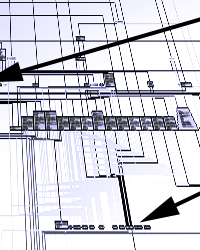General Motors 1998 S-10 Electric Truck BPCM Reverse Engineering Project
Contact
If you are interested in this project please contact Steve Hawkins: steveh [at] mountainhaus [dot] com
http://www.hawkins.info/1998_s10e_ev95installation.html
Background
We need to reprogram a 1998 GM S10E electric truck�s BPCM (Battery Pack Control Module) through reverse engineering of the c++ control program. This vehicle is the sister car to the GM EV1 (the electric car fleet that was crushed by GM back in 2003). About 60 of these vehicles survive in private hands. The vehicle has two c++ software programs which GM defines as "calibrations" that control the vehicle's operations. The first is the BPCM (Battery Pack Control Module) which operates on calibration #12225679, and the second is the PIM (Power Inverter Module) which operates on calibration #09393169. We are focused on the first, the BPCM software for this project. Mr. Jon Bereisa, x-Chief Engineer for the EV1 program, told us that the source code and documentation for these software calibrations were not maintained by GM and are no longer available.
Operations
These calibrations can be uninstalled and reinstalled into the vehicle via the GM TIS/SPS (Service Programming System) using the OBDII (On Board Diagnostic) connections. These calibrations are embedded software that control the module functions. I have acquired the GM installation programs (TIS/SPS) and tools (Tech 2) to uninstall and reinstall these calibrations; however, GM did not provide the ability to change the internal programming of the calibrations with these systems, hence the need for reverse engineering.
History
It is worth noting that there were three (3) separate versions of BPCM calibrations for this vehicle through the years; one for Delco PbA Batteries, another for Panasonic PbA batteries, and a third for Ovonic NiMH batteries. None of these battery types are available today. I have installed a forth type, Panasonic EV-95 NiMH batteries, which are relatively different then any of the available calibrations, thus my need to modify the software. Additionally, with the advent of newer LiON batteries, programming will need to be adjusted yet again in the coming years to keep these vehicles alive.
General
I suspect that the parameters we wish to change are minimal and are a set of "variables" that do not require the recoding of "algorithms". By example, the current variables vs. the new (desired) variables would reflect the following, and we believe that these parameters are defined in a general "table" format that the system reads back to:
Current (old) programming = New (desired) programming =
26 traction batteries 26 traction batteries
5 cells each 10 cells each
14.7 max. voltage per battery 15.0 max
11.2 min. voltage per battery 8.0 min.
The current charge profile = The current charge profile =
16.5amps, 17.2amps to 98% SOC
drops to 12amps, 2.0amps to 100% SOC
9amps, no overcharge.
6amps, and
2amps,
with an end cycle overcharge pattern
We will also correct the minimum traction pack voltage from +/-291.2 volts to 208 volts, among other suggested modifications, once we are able to assess the available code analyse it.








